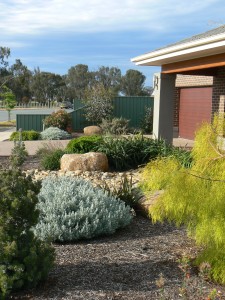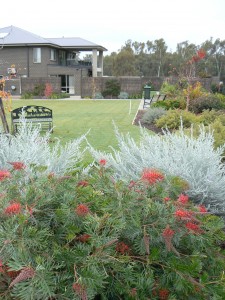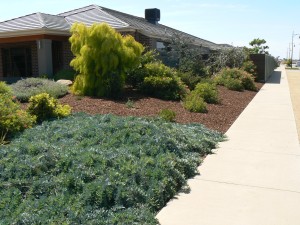Getting the best out of Australian Native Plants
- 11
- May
Choose well, prune properly and you are eighty percent of the way to scoring a goal.
Can we make beautiful gardens with Australian natives in northern Victoria?
Yes we can, but as with all other garden plants it is much better if we know which ones to choose and how to manage them.
Times have changed.
Time has changed the range of plants available and time has changed us as gardeners and the way we look at plants and how we use them.
The last wave of popularity for Australian Natives pre-dates my arrival in Australia but talking to nurseries, growers and gardeners who were busy in the 1980’s it is obvious that Australian Natives were in demand and widely planted and widely misunderstood.
The best thing to do is get some misconceptions out of the way as quickly as possible.
- Just because a plant is native to Australia does not mean it is hardy in your garden
- Just because a plant is native to Australia does not mean it is low maintenance
It makes sense to think that if a plant grows wild in this country it should grow well in a garden here but it makes more sense that a plant that grows wild on the top of Mount Kosciuszko at 2228 metres won’t grow well in the flood plains of the Goulburn Valley.
Sometimes we can be surprised though. I have an observation that sometimes plants can do very well outside of where they normally grow wild. To say that we must replicate the growing conditions of where a plant originates from to have success is not always true. Plants may sometimes do better in another environment as there may be a lower incidence of pests and disease or they may just like the new environment but just never stumbled across it before.
The reality from my perspective is that wild plants succeed in a particular growing environment because they are able to and not necessarily because they need that particular type of environment. Obviously plants are adapted to the environments from where they originate so choosing plants for tricky garden spots that work with natural adaptions makes excellent sense.
For a common sense approach I’d suggest plants are chosen based their origins with an assumption that they might suit a similar growing condition to their wild home or a LESS harsh environment.
If a plant grows in a very cold environment it might be ok in mild gardens as well as cold but probably not very hot.
If a plant grows in an area where rainfall is irregular with long dry spells it might well do ok in a damper garden environment as well as a dry one
Light levels and sun exposure are a little different in my experience and I’d be more inclined to more closely replicate the natural environment. Simply put, if it came from the shade then use it in shade if it came from the sun plant it in sun.
It is worth stopping here.
All this is probably academic since at the end of all this the Garden Natives offered for sale are often a host of hybridised and new release Australian Natives that differ quite widely from the wild plants from which they originate.
A long period of drought has encouraged a resurgence of interest in native plants by breeders and growers and there are some beautiful garden varieties out there now.
The only way to know what will do well is to get to know these particular varieties.

Acacia ‘Lime Magik’- A beautiful soft weeping yellow foliage. Very garden worthy plant but needs training and pruning.

Grevillea ‘Ned Kelly’- A star performer with orange-red flowers for several months a year. Prune at least once a year and avoid humidity. Eremophilla ‘Blue Velvet’ (grafted)- a beautiful silver foliage with mauve blue flowers. Keep a close eye out for the rootstock growing and remove any green growth from ground level
Acacia baileyana ‘prostrate form’ – this is often over looked but is a terrific plant to cover a larger area with mounding blue grey foliage. Prune occasionally to build up shoot density. (I don’t see any evidence of it being weedy in the Goulburn Valley region of Victoria over the last fifteen years)
I can confidently say that with the range of garden natives that are available now there will be some beautiful dry tolerant gardens featuring Australian plants in this area for years to come.
I have been talking garden type Australian native plants here not re-vegetation plants and I need to make that clear. There is a division here since re-vegetation plants are best sourced and grown from local provenance to preserve the genetic integrity of an area and are mostly grown from seed

